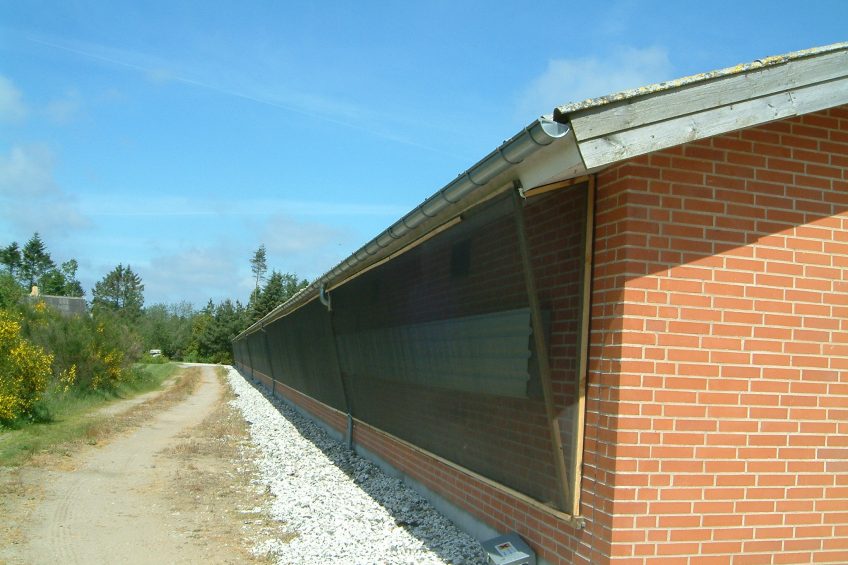Integrated approach leads to less Campylobacter

Interventions in indoor broiler production can reduce the occurrence of Campylobacter in flocks and meat and consequently the number of human Campylobacter infections. This demands a comprehensive set of control measures, which have successfully been implemented in Denmark. It is the result of close collaboration between producers, authorities and researchers.
Campylobacter bacteria are a major cause of food-borne infections worldwide. In great parts of the industrialised world, including Denmark, humans suffer more frequently from Campylobacter infections than from Salmonella infections.
The sheer number of human Campylobacter diarrhoea cases result in great socioeconomic costs. One of the main transmission routes is known to be eating and handling poultry. In Denmark, this has been further specified to chilled broiler meat. To reduce the number of human Campylobacter infections it is therefore crucial that actions are taken to reduce the occurrence of Campylobacter in the broiler production.
Due to a significant increase in human Campylobacter cases in Denmark in the late 1990’s, risk management initiatives were implemented to reduce the risk from Campylobacter in indoor broiler production. These initiatives concerned primarily biosecurity in and around broiler houses; comprising both implementation of control measures and research into new interventions.
Biosecurity is a set of preventative measures that aim to reduce the risk of transmitting Campylobacter from the outdoor environment to the broiler flocks. These include having anterooms divided in separate zones and/or hygiene barriers at the house entrance; changing clothes and footwear and washing hands before entering the broiler house; using clean drinking water; rodent control and having vegetation free zones around the house.
Scheduled slaughter means identifying Campylobacter positive flocks before slaughter and subjecting carcasses from these flocks to special treatment like freezing, heat treatment or other Campylobacter decontaminating treatments. Scheduling meat from Campylobacter positive flocks for freezing was included in the action plan in 2003, inspired by the success of this intervention in Iceland.
EU project on farm interventions Using the experience from the Nordic countries (including Denmark), intervention strategies are now being investigated further in a EU project, CAMCON (2010-2014). This project aims to improve the control of Campylobacter in primary broiler production and aims to find control strategies that may be helpful in all regions of Europe, despite differences in production methods and environmental conditions. An important part of the CAMCON project is that results should be communicated all the way out to the end-user, i.e. the broiler farmers. The plan is to prepare guidelines, educational videos, internet-based tools, and propose EU standards for producers, regulators and consumers. Information concerning the project and the results is available at www.camcon-eu.net |
Research in methods to reduce the concentration of Campylobacter on broiler meat was initiated in 2003. First, the evisceration process was identified as the process operation contributing the most to the spread of Campylobacter from intestinal content to the meat. Meat with visible intestinal contents had 90% more Campylobacter bacteria than meat without visible contamination. Therefore, minimising the spread of intestinal contents significantly reduces the occurrence of Campylobacter on the meat. With regard to decontamination techniques, freezing for a few weeks reduced numbers of Campylobacter by 99% and crust-freezing of breast fillets reduced numbers by 50%.
Consumer campaigns and teaching material for school children concerning the presence of bacteria in meat and proper kitchen hygiene are also elements in the Danish strategy. These campaigns have been launched using pamphlets, information on the internet, as well as radio and TV spots. Furthermore, retail packages of poultry meat are labelled with information on how to safely handle and treat the meat.
Coincidental with the implementation of the control measures, the percentage of Campylobacter-positive broiler flocks at slaughter decreased from 45% in 1998 to a level of 26-30% in the period 2004-2009 (Figure 1). Furthermore, the number of registered human Campylobacter cases decreased from 4,620 in 2001 (maximum) to 3,352 cases in 2009. Effects of action plans against Campylobacter have also been seen in other countries. Both Iceland and New Zealand have experienced dramatic decreases in human cases after implementation of control measures in broiler production.













